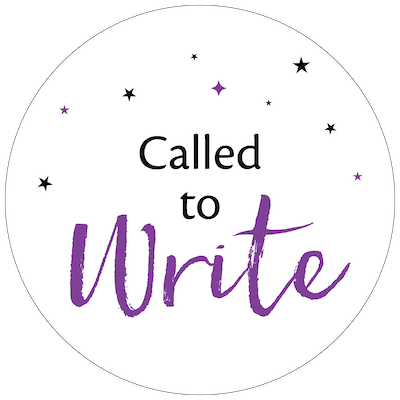 In the second class of my interview series with Enneagram and story development expert Jeff Lyons (recordings no longer available), we talked about “The Critical Importance of Premise Line Development.” Today’s post is a recap of what we learned.
In the second class of my interview series with Enneagram and story development expert Jeff Lyons (recordings no longer available), we talked about “The Critical Importance of Premise Line Development.” Today’s post is a recap of what we learned.
Jeff started off by talking about the importance of being clear about what you’re writing is about a situation or a story:
- A story is about a person on a journey of change, where they are trying to achieve a goal or attain a desire and have a revelation about themselves at the end. Stories include relationships, because, as Jeff says, “Stories are conversations, not monologues.”
- A situation, on the other hand, is usually some kind of problem or predicament with a solution that tests a protagonist’s problem-solving skills but doesn’t reveal character. Few, if any, subplots, twists, or complications are required to solve the problem, and it ends in the same emotional emotional space it began in. Standard genre beats may still evident but not the deeper underpinnings of story structure.
While Jeff doesn’t suggest that story is better than situation or vice versa, he says that they require different building blocks to successfully deliver them. A story will rely on deeper story structure components, while a situation will rely on entertainment value, great set pieces, and good dialogue, but won’t reveal character or be driven by a moral problem or theme.
And what is story structure?
Jeff defines story structure differently than the way most of us have learned to think of it. Most of us think of things like inciting incidents, turning points, mid-points, climaxes, and resolutions as story structure. Jeff describes these as “story beats” and says that most writing systems that purport to be about structure are actually focused on these typical beats and are missing the deeper, natural structure implied by both premise development and character motivation.
Getting from idea to premise line
When a story idea first arrives, it often comes as an “undifferentiated mass”. It’s a collection of swirling notions and intuitive instincts that don’t translate yet into a clear organized story structure.
Jeff uses premise line development as a tool to begin to decipher the fuzzy, abstract ideas into a more concrete, contained story — the nascent beginnings of story structure. He compares it to stepping down electricity from the power plant into a useable form in a residential setting. It has to go through transformers to make it available at a functional level. The premise line is the first step in translating from that vague mass of ideas into something resembling a story.
The way that he does this is by using seven core elements to begin to tease out the components of the story and shape them, including:
- Character — do you have a sense of a character who will be central to the story?
- Constriction — what happens that pushes the character off the line they’re on at the beginning of the story?
- Desire — what does this character want? At this point, we’re not talking about something specific or tangible, that comes later, but rather a sense of a core desire or motivating force.
- Relationship — who is this character in relationship with? (Again, stories are conversations.)
- Resistance — what is the push back or opposition that stops the main character from getting what they want?
- Adventure and/or Chaos — what is the adventure or chaotic experience the character has that leads them to the epiphany at the end?
- Change — this is the dramatic epiphany the end — how the character changes as a result of their experiences.
Moving from premise line to visible structure
Once you’ve identified your premise line, you can then move to a more “visible structure” for the story. This is a process of taking what you’ve started with and beginning to develop and flesh out the pieces of the story more deliberately. At this stage of the process, you’ll make the following shifts:
- The character becomes the protagonist.
- The constriction becomes the moral problem of the protagonist. (This informs the inciting incident.)
- The character’s desire becomes a chain of desire (a sequence of goals or desires all related back to the character’s core desire).
- The relationship becomes the focal relationship for the story, the person the protagonist experiences the journey with.
- The resistance becomes the central opposition. At the outset and premise level, you may just have a sense of an opposing force. At this stage it would become personal, dramatic, and/or personified.
- The adventure/chaos becomes the plot and momentum of the story through the second act. (This is the part of the story that includes the typical story beats, like midpoint, low point, and climax).
- The change is the evolution or de-evolution of the protagonist.
Bridging the gap using the Enneagram
In order to make the transition from that undifferentiated mass of the original idea to the more visible structure of the premise line all the way into a visible, clear structure, Jeff uses the Enneagram to help identify the specifics for each one of these elements, such as:
- The best protagonist for the story, based on the personal change the story is designed to illustrate.
- The best opposition or antagonist for the story, designed to help provoke the protagonist into that change.
- Brainstorming and understanding the protagonist’s core desire based on their Enneagram type, to design a chain of desires that the character seeks that drives the story forward.
- The best allies or focal relationships for the protagonist.
- The best likely inciting incidents, turning points, midpoints, low points, and battles/climaxes that will stimulate your specific character and/or be driven by him/her to the final outcome of the story.
The Enneagram doesn’t tell us the ONLY options for each of these, but rather suggests the best form for each of these elements. Then as the writer, it’s up to you to begin to craft the specific story details to deliver that. (Form follow function, after all.)
For instance, at the broadest level, an Enneagram Three seeks approval from the outside as a way of validating themselves, but what they really need is to have their own sense of value and sense of self. So a story about a Three would be designed to play out that journey in a visual, visible metaphor organized around the ideas of approval-seeking as the constriction, taking an action that would cause a loss or challenge based on that approval-seeking as an inciting incident, to a low point where the Three finally realizes they are sacrificing themselves on the altar of approval and giving up everything to do so, all the way to a climactic moment where the Three stops looking outside themselves for approval and decides to find it within.
At a more specific level of story detail, those ideas could play out with a businessman who will never say no to a contract, trying to please everyone and perform by juggling and obfuscation, but he finally says yes to too many projects and the house of cards he’s built around himself comes crashing down. He would then realize he needs to choose projects and work that HE values, and by so doing, recognize his OWN inherent value. It’s HIM that makes the projects successful, not the game he’s playing.
And of course, we can get even more specific from there, as well as fleshing out the details of his supporting relationships and opposition.
Your turn
Do you develop a premise line for your work? Tell us about it! We’d love to hear your thoughts in the comments.
Warmly,

You may also be interested in:
- The Power of the Enneagram
- Using the Enneagram for Story Development
- Using the Enneagram to move from character to story
- Find your character’s moral problem with the Enneagram


Hi Jenna,
I missed the class today but wanted to hear the recording, I cant seem to find it.
Can you please send me a link.
Thanks in advance
Are you registered for the class? The reminder message that went out today at 1 p.m. Pacific Time includes the recording link and I also sent out an announcement about the recording being available around 6 p.m. Pacific, so it’s in there too. (If you are registered but didn’t receive those messages, you can check your spam folder for them.)
If you aren’t registered yet, you can sign up here: https://calledtowrite.com/enneagram-story-structure and you’ll instantly receive a message that has a link to the recordings page.
Let us know if you have any trouble finding it! You can reach my team at support@jennaavery.com.
Usually I start with several ideas about a person or group whose history led them to the current problem or conflict. At the start I let them slug it out a bit and this informs the character profiles that follow soon after. However, adapting a novel into screenplay format required extreme tightening of the story, refinement of main characters and excising all else. Should the movie ever get made readers will probably miss the kindly old cat lady.